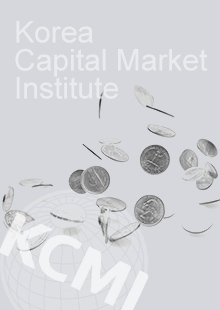Find out more about our latest publications

A Study on the Stock Trading Mechanisms for Enhancing Liquidity: Focusing on the System of Liquidity Provider
Research Papers 05-05 Dec. 26, 2005
- Research Topic Capital MarketsFinancial Services Industry
- Page 144
- No other publications.
A Study on the Stock Trading Mechanisms for Enhancing Liquidity: Focusing on the System of Liquidity Provider
In this research, we examine the problems of infrequently- traded stocks on the Stock Market Division of the Korea Exchange (hereafter KRX) and suggest modifications of the trading mechanism to improve the market quality of the KRX. More specifically, we first assess the current level of liquidity on the KRX by analyzing the various market statistics (including variables representing market quality) and the illiquidity premium of infrequently-traded stocks. Next, we survey the previous studies on the effect of the liquidity provider (hereafter LP) system. Based on the results that we obtained from our empirical analyses and literature survey, we derive some insights on the problems of infrequently-traded stocks. Finally, we make some comments on the LP system that is scheduled to be adopted by the KRX in January 2006.
Measuring by monthly total trading volume, the liquidity of the KRX appears comparable to other major stock exchanges in the world. Measuring using more refined market statistics, however, the liquidity and market quality of the KRX are very low. The fact that a large portion of the KRX-listed stocks suffers from illiquidity due to infrequent trading appears to be the most important reason for this phenomenon.
The results from the following analyses support our assertion. First, we have examined some market statistics; the ratio of the annual average trading volume to the number of listed shares is less than 30% (10%) in 71% (40%) of the total KRX-listed firms. Second, we investigated duration between trades, intra-day spread ratio, and intra-day volatility (including transient volatility), after stratifying all KRX-listed firms into ten groups based on daily trading volume; average durations between trades in 8th, 9th, and 10th deciles are 26 minutes, 37 minutes, and 50 minutes, respectively. Average spread ratios of those deciles are 2.2%, 2.9%, and 5.2%, respectively, which are far greater than those of the other deciles. Average intra-day (and transient) volatility increases dramatically as one goes to the group of lowest volume, i.e., 10th decile. Third, we estimated the illiquidity premium, after stratifying the entire KRX-listed firms into ten groups based on daily trading volume; average liquidity premium of 1st decile is 0.0089, but it grows rapidly in the lower-volume groups. The liquidity premium of the lowest volume group, 10th decile, is 0.9280 which is 100 times of that of 1st decile. Taken all together, our results indicate that three groups (8th, 9th, and 10th deciles) of the lowest trading volume suffer from the vicious circle of illiquidity and that they play a significant role for decreasing the market quality of the KRX.
Currently, the KRX uniformly applies a single trading mechanism
to all the listed stocks, irrespective of their liquidity. This has prevented the KRX from coping with the problems of illiquidity in infrequently-traded stocks. In order to overcome these problems, the KRX will introduce the LP system --in which brokerage firms continuously provide bid and ask spread to infrequently-traded stocks according to the pre-determined quantitative rules-- for trading of those infrequently-traded stocks as of January 2, 2006. The KRX sets the quantitative rules that specify the liquidity-providing activities of LP, including the spread of quote, order size, market-reaction time, and quote-participation rate. As a compensation to its liquidity provision, the LP's transaction fees are waived by the KRX and the LP receives contracted fees from the firms to which it provides liquidity service. After their adoption of the LP system, many European exchanges such as Deutsche Borse, Euronext, and Stockholm Stock Exchange have experienced an improvement in market quality, including increased liquidity.
The LP system proposed by KRX is summarize